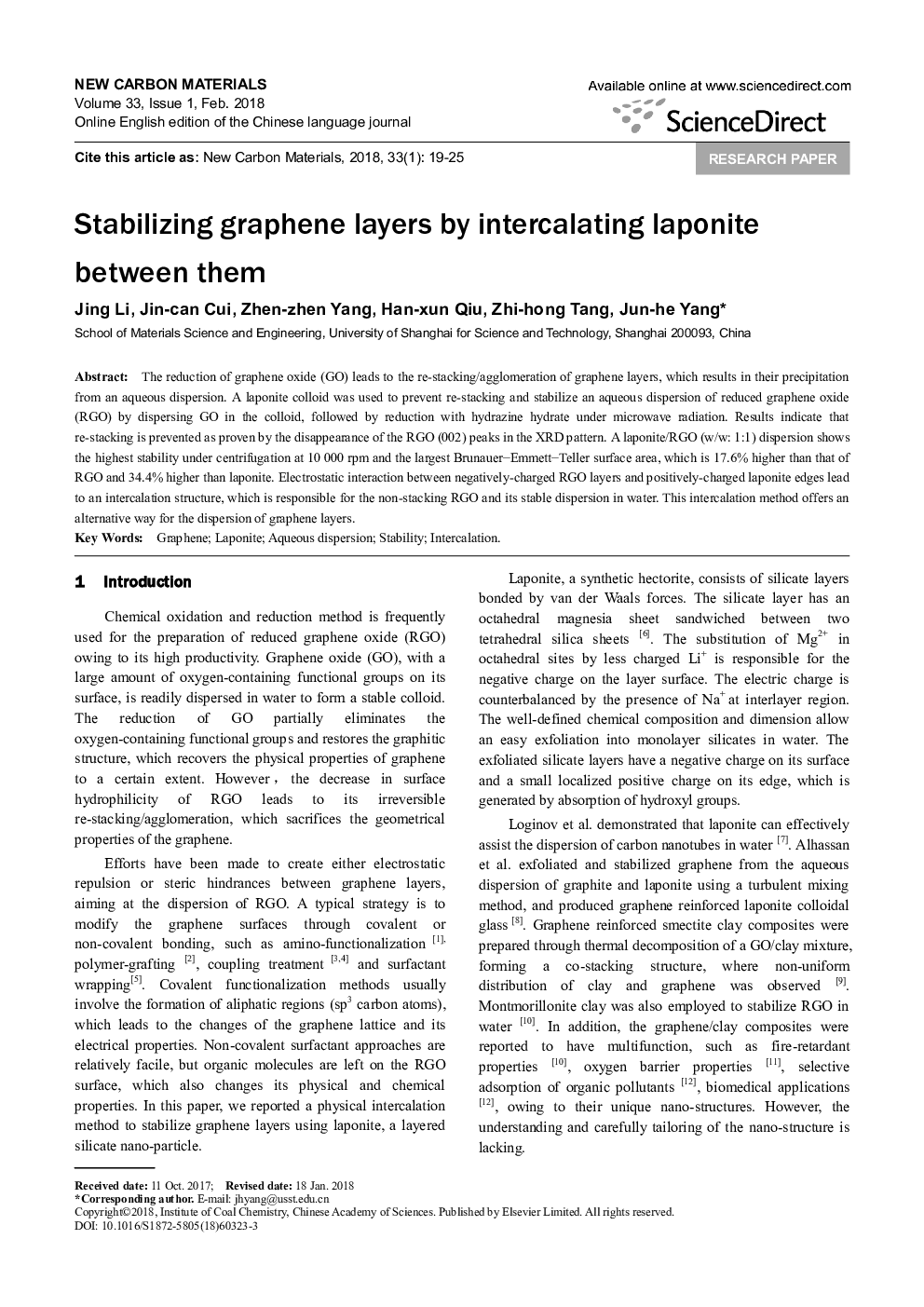| Article ID | Journal | Published Year | Pages | File Type |
|---|---|---|---|---|
| 7954147 | New Carbon Materials | 2018 | 6 Pages |
Abstract
The reduction of graphene oxide (GO) leads to the re-stacking/agglomeration of graphene layers, which results in their precipitation from an aqueous dispersion. A laponite colloid was used to prevent re-stacking and stabilize an aqueous dispersion of reduced graphene oxide (RGO) by dispersing GO in the colloid, followed by reduction with hydrazine hydrate under microwave radiation. Results indicate that re-stacking is prevented as proven by the disappearance of the RGO (002) peaks in the XRD pattern. A laponite/RGO (w/w: 1:1) dispersion shows the highest stability under centrifugation at 10 000 rpm and the largest Brunauer-Emmett-Teller surface area, which is 17.6% higher than that of RGO and 34.4% higher than laponite. Electrostatic interaction between negatively-charged RGO layers and positively-charged laponite edges lead to an intercalation structure, which is responsible for the non-stacking RGO and its stable dispersion in water. This intercalation method offers an alternative way for the dispersion of graphene layers.
Related Topics
Physical Sciences and Engineering
Materials Science
Materials Chemistry
Authors
Jing Li, Jin-can Cui, Zhen-zhen Yang, Han-xun Qiu, Zhi-hong Tang, Jun-he Yang,
